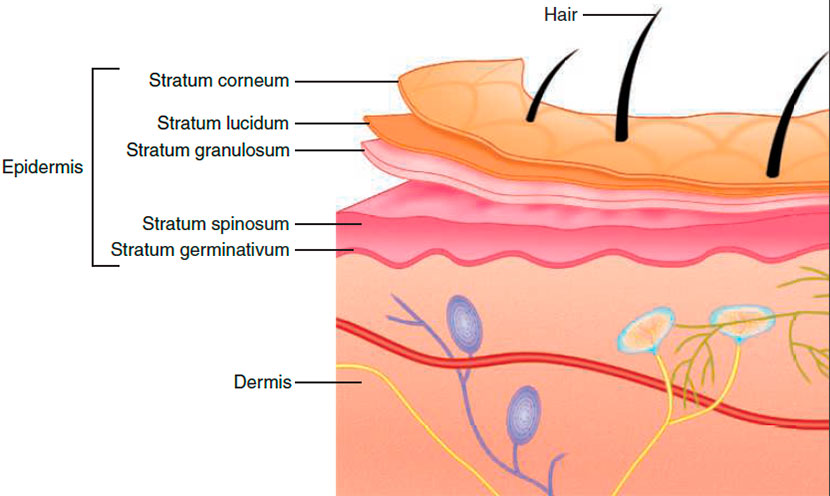A Comprehensive Study of the Epidermis: An Essential Guide for Cosmetologists
The human skin is an intricate organ with an array of physiological functions that are critical to our overall health and well-being. Amongst its multiple layers, the epidermis, being the outermost layer, is particularly significant in the realm of cosmetology. As cosmetologists, a comprehensive understanding of the epidermis is not just beneficial, but indispensable to accurately assess the skin’s condition and provide clients with personalized and effective skincare solutions.

Study of the Epidermis
The epidermis, being the skin’s protective barrier, shields the body from external threats, and serves as the primary defense against infection, dehydration, and mechanical stress. This thin, avascular layer is composed of five distinct strata, each contributing to the epidermis’ vital role in maintaining skin health and integrity.
Stratum Corneum
Also known as the “horny layer,” this is the outermost stratum, the layer we see and feel. It comprises overlapping cells forming a protective barrier that guards the underlying tissues against environmental threats. This layer undergoes a continuous process of desquamation, where cells are shed and replaced by newer cells emerging from beneath. Composed predominantly of keratin, a fibrous protein that is also the main component of hair and nails, the stratum corneum forms a water-resistant barrier that helps regulate skin’s moisture levels and pH, essentially contributing to skin’s texture and resilience.
Stratum Lucidum
A layer unique to the thick skin areas such as the palms, soles, and digits, the stratum lucidum is a translucent, clear layer that allows light to pass. The tightly packed cells in this layer contribute to our unique fingerprints and footprints, adding to the identity-defining features of our body.
Stratum Granulosum
Known as the “granular layer,” this stratum comprises cells filled with keratin that assume a granular appearance. As these cells migrate towards the skin surface, they undergo apoptosis, or programmed cell death, contributing to the stratum corneum as they replace the cells that are regularly shed from the skin’s surface.
Stratum Spinosum
As the “spiny layer,” the stratum spinosum is where the process of desquamation begins. This stratum is the thickest layer of the epidermis and serves as a bond between the granulosum and the basal layer, aiding in the overall stability of the skin.
Stratum Germinativum (Basal Cell Layer)
The epidermis’ deepest layer, the stratum germinativum is where the journey of epidermal skin cells begins. This layer actively produces new skin cells, replacing the older cells shed from the skin’s surface. Crucially, it also houses melanocytes, cells that synthesize melanin, the pigment responsible for skin color. Melanin serves a vital protective role, shielding the underlying dermal cells from the harmful effects of ultraviolet (UV) light exposure.

Cosmetologists are frequently confronted with various skin conditions that require tailored approaches to treat effectively. This mandates an in-depth understanding of the skin, particularly the epidermis, as the first point of interaction. Through the understanding of these layers, cosmetologists can provide effective treatments and give educated advice about skin health, contributing to clients’ overall well-being and satisfaction.
Moreover, knowledge about the structure and function of the epidermis enables cosmetologists to assess the skin’s condition more accurately, helping identify potential skin issues, their origins, and suitable treatment approaches. However, it’s crucial to remember that cosmetologists should refer clients to dermatologists for diagnosis or treatment of skin diseases or conditions that fall outside their professional expertise.
To conclude, understanding the epidermis is pivotal to the practice of cosmetology. By offering scientifically-informed advice, cosmetologists can help clients maintain healthy, glowing skin, improve their overall appearance, and bolster their confidence, making cosmetologists not just beauty providers but crucial contributors to clients’ well-being and self-esteem.






